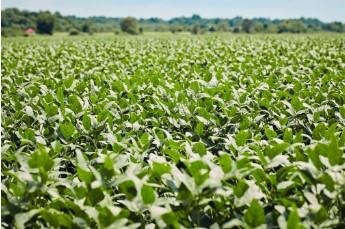
Corporate sustainability reports guide producers to sustainability goals
American Bakers Association. ADM. Milkhouse Candles. Walmart. These days, everyone from butchers and bakers to candlestick makers - and the retailers who sell them - are committing to sustainability. However, definitions of sustainability and expectations vary.
Corporate sustainability reports by supply chain members are making it possible to define expectations at every link. These enable farmers to understand what customers want, focus on continuous improvement and deliver what is expected from meal and oil to grow demand for U.S. soybeans.
Many corporate sustainability reports are made public - here are highlights from a few:
American Bakers Association
American Bakers Association members developed a Sustainability Scorecard that enables members to calculate sustainability of production practices, landfill waste, total energy use and water usage. These benchmarks help members identify where they can become more sustainable, and provide an opportunity to compare and demonstrate production advantages of U.S. soy to stimulate demand.
Source: American Bakers Association
ADM
ADM recently partnered with Unilever, the World Wildlife Fund (WWF), the United Soybean Board, the Iowa Soybean Association and the Field to Market to ensure the soybean oil used in Unilever’s Hellmann’s Mayonnaise brand is sustainably sourced. Growers enrolled in the program analyze how their management practices impact operational efficiency and natural resources and report findings that satisfy Unilever sustainability requirements, which builds and sustains demand for their crops.
Source: ADM
BASF
In 2015, BASF conducted sustainability assessments for 95.4 percent of its portfolio to measure the potential environmental impact of each product. Results are used to prioritize product development. These benchmarks provide an opportunity to demonstrate the environmental benefits of biobased ingredients like soy.
Source: BASF
Bayer
Resource and energy efficiency are important sustainability goals for Bayer. The company is developing new technologies that are more climate friendly and says it is helping to reduce emissions through marketing the use of products that enable farmers to deliver higher yields with state-of-the-art crop protection, new cultivation methods and seeds with stress-tolerant traits.
Source: Bayer
Bunge
Bunge believes all agricultural value chains should be environmentally sustainable. It created business policies to eliminate deforestation, employed test methods that incorporate carbon and biodiversity protections, and they are enhancing the traceability and transparency of key supply chains over time. Sustainable farming practices of U.S. soybean farmers position them as a preferred supplier.
Source: Bunge
Milkhouse Candles
Sustainably grown soybeans meet the standards of Milkhouse Candles, who replace paraffin with soy wax to make cleaner burning candles. The manufacturer also values the stable, high-quality feedstock supply made possible by sustainable farming practices of US soybean farmers.
Source: Milkhouse Candles
Walmart
Walmart collaborated with 15 large suppliers, representing 30 percent of their food and beverage sales in North America, to provide farmers with data and tools for use in developing plans to optimize fertilizer and tilling practices in soy crop rotations. Walmart’s pilot optimization program includes 2.5 million acres, which they say has the potential to reduce greenhouse gas by 2.3 million metric tons.
Source: Walmart
Consumers
In 2015, a survey of more than 1,300 global brands indicated American consumers prefer brands that are committed to sustainability. Consumer preference research consistently concludes that most Americans (roughly 55-68 percent) are concerned about the environment and would consider a green product over a non-green product, provided it performs as well and does not cost appreciably more.
Source: Nielsen
Source:unitedsoybean